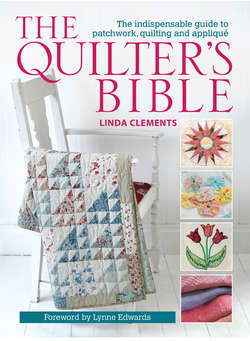Читать книгу The Quilter's Bible - Linda - Страница 60
На сайте Литреса книга снята с продажи.
Patchwork Settings
ОглавлениеA setting is the layout that the units, blocks or sections of a quilt or project are arranged in – and the choice is excitingly wide. By far the most common and easiest arrangement is using blocks, which are based on a grid, and over the centuries a vast number of block patterns have been developed. Block patterns, which are repeated to form more complex arrangements, have been with us for a long time and can be seen in art and architecture the world over – from Islamic mosques to Victorian tiled floors.
The way that patchwork units and blocks can be arranged is almost limitless, giving opportunities for wonderful combinations of colour and tone. The more varied the shapes, the greater the scope for unique designs.
Blocks not only allow you to break a quilt design down into simpler units but the combination of different blocks and alterations in colour and pattern allow fascinating secondary patterns to become apparent. The majority of blocks are square, the easiest shape to combine, but the principles of arranging the layout of a quilt are the same whatever the block shape. Some of the most common quilt settings are described in this section. We also look at types of quilt with descriptions of the most popular ones, some of which you may be familiar with, such as sampler quilts and scrap quilts.
Patchwork settings can be very simple yet still have impact, as this elegant quilt by Julia Davis and Anne Muxworthy shows. Each square has a border and the whole design is then set on point with triangles added to return the shape to an overall square.
